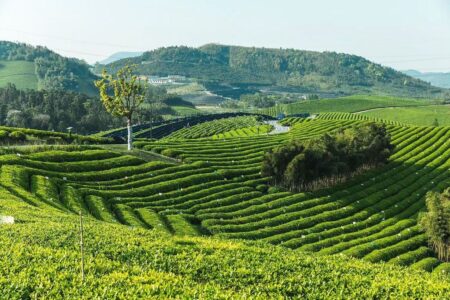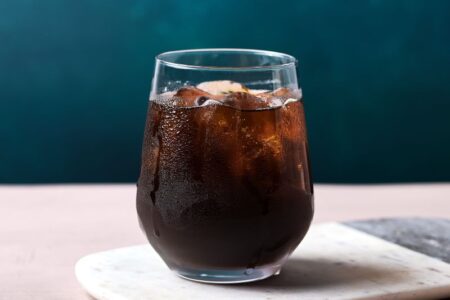Scandinavia: A Growing Market for Tea

Move over coffee, Scandinavians have found another hot beverage to keep them warm and satiate their palates – tea. Coffee remains the leading hot beverage throughout Scandinavia, but consumers are beginning to take notice of tea’s health benefits while also looking beyond the standard black tea that dominates the market, resulting in consistently growing sales.
Most people consider Scandinavia to comprise the three kingdoms of Denmark, Norway and Sweden, which are constitutional monarchies. Finland, which acquired independence as a parliamentary republic in 1917, is also typically included in what is considered Scandinavia. Ranking these four countries by population, there are: 5.1 million people in Norway, 5.4 million in Finland, 5.6 million in Denmark and 9.6 million in the most populous one, Sweden. All together there are 25.7 million North Europeans, who share a geographical area and a cultural and historical background. There is a widespread view that it is the northern European climate with several months of winter snow, long nights and little sunshine during the short days that may offer some explanation for the high coffee consumption in Scandinavia, which amounts to an average of 10 kilograms of green coffee beans per head per year, which compares to 4.2 kg for the average US consumer, according to the London-based International Coffee Organisation (ICO).
According to the 2015 data published by the London-based International Tea Committee, the annual per capita consumption of tea is rather small, just below 0.2 kg for Finland and Norway, below 0.3kg for Denmark and 0.31kg for Sweden, which compares to 0.41 for the USA and 1.74 kg for the UK.
Tea has been present in these markets for a long time with consolidated major market shares held by European multinationals such as Unilever with its Lipton brand and Associated British Foods (ABF) with its Twinings and Pickwick brands, which are distributed by local companies, and Jacobs Douwe Egberts. But during the last past ten years or so, tea consumption has started to register some significant growth. The four markets all have their own identities and tastes that derive from different circumstances and the pioneering tea personalities involved.
Sweden: Affinity for Ceylon Black Tea
In Sweden, the market leader Unilever holds about 55 percent of tea sales in value. The retail market is dominated by three large central retail chains: Coop, ICA and Axfood. Tea is also imported by some of the big coffee roasters, with number one company Bergstrands having launched a quality leaf tea brand called Teapigs, and number two company Kahls marketing the tea under its own name. According to London-based market research firm Euromonitor International, about 20 percent of the market is high quality, Ceylon-type, loose leaf black tea.
There is probably a good reason for the strong presence of Ceylon-type black tea: Vernon Mauris, a tea trader from Sri Lanka, whose passion and tea knowledge has been a pioneer for the tea industry in the Swedish market. Mauris worked with Coop Sweden for more than ten years before he decided to set up his own company in Stockholm and to actively start promoting fine tea. His son, Gihan Mauris, who is now in charge of the daily business, said that his father founded his own company, EWC Scandinavia AB in Stockholm, an importer and wholesaler of fine teas from origin, in 1978. “My father also set up a retail outlet in the old quarters of the city, the Tea Centre of Stockholm, for direct customer contact, tea workshops and tea training. There he launched his master blend, Söderblandning, which means ‘the blend of South Stockholm Island’, in 1981.”
Mauris noted that the elegant, scented Ceylon black tea blend was an instant success and has become a cultural tea beverage in Sweden. “Almost every tea lover [here] has either tasted or heard of Söderblandning,” he said. “Its popularity extends beyond our country’s borders. However, whilst Söderblandning is my father’s creation and is supplied exclusively by our company, copies with similar names are sold by some of our competitors.”
In order to attract more people to fine teas Vernon Mauris launched afternoon tea at the Stockholm Grand Hotel in 2006, which became popular and similar events gradually spread to other premium premises. EWC Scandinavia AB was appointed the Grand Hotel’s exclusive tea supplier and Vernon Mauris trained the chefs and more than 60 staff members, so that they could properly prepare the several fine teas selected for the menu. “Here black teas have always been the most popular, but [my father] decided the time had come to introduce fine green teas from Japan, China, Korea and Taiwan, which proved successful,” said Mauris. “Our passion for Japanese teas has allowed me to learn about tea on the premises in Japan where we spend several weeks.” He added that their company was the first to export teas from Sweden to Japan (in 1998), “where our scented black tea blend was a true hit.”
Recent data demonstrate that tea consumption in Sweden is regularly rising; whilst still dominated by black tea it is the demand for green teas and fruit and herbal blends that have the highest growth rates.
Denmark: Searching for Origin Teas
In Denmark, which has no lands beyond the Arctic Circle, the main tea player is Merrild Kaffee A/S , in Copenhagen, which sells the Pickwick tea brand and holds close to 30 percent of the tea market in value. The Lipton brand holds 22 percent, while Twinings has less than 5 percent. These European brands offer longstanding good quality, but are mainstream and the Danish consumers have started to look for a wider choice and more authentic origin teas. Among the quality tea retailers is the traditional fine food importer and coffee roaster, AC Perch’s, established in the quaint old quarter of Copenhagen since 1835. In 2006, Perch expanded to open a tea room above its retail space, widened its selection and now also provides tea advice to new customers.
In 2008, Alexis Kaae opened Simply Tea in Aarhus, which sells exclusively fine teas. She has travelled with and been given guidance by Austin Hodge, the founder of the US tea company, Seven Cups, and said that her specialty tea selection caters to a growing demand from Danish consumers, who have become aware of true quality teas. She confirmed that Scandinavians are the biggest coffee drinkers in the world and will certainly continue to prefer that cup in the near future. However, Scandinavians travel a lot and many students spend their sabbatical year or part of their studies in Asiatic countries. There they discover the local teas, which have unusual, highly specific and refined taste profiles. After returning home, these well-educated millennials want to continue to sip these delicious cups, which they learned to appreciate in China, Japan and Korea, etc.
Because these teas were not easily available on the market, and in order to meet this new and growing demand, Kaae established Simply Tea – a place where no coffee is served. She added that this young generation of Scandinavian tea enthusiasts are not necessarily trendsetters, nevertheless they will progressively introduce good quality tea to their friends, family and colleagues, generating further demand during the coming years. “Let us hope it will not take too long before the HoReCa outlets follow that trend and improve their selection and provide some tea knowledge at the staff level,” said Kaae.
Finland: Low Tea Awareness
In Finland, where coffee consumption peaks at over 12kg per head and per year, tea has also started to gain more throat share. The historically low tea consumption is supplied by the tea majors, the main players being Twinings with about 30 percent of the tea market in value and Lipton with 28 percent. Additionally, there are two important local operators, which both have their own tea brands: Norqvist and Forsman Tea. The latter was founded in 1979 as tea importer, broker, blender and packer. Specialising in fine origin teas, Forsman operates a tea-tasting room on the factory premises, where customers can discover a wide variety of teas.
On the consumer side, a Finnish Tea Drinkers Club was launched in 2005 by Pirkko Arstila, the MTV3 host. In 2007, another tea-loving Finnish TV journalist, Helena Petaïstö, published a book The Tea Journey. This book won a prestigious prize, attracted many people to tea and made the author a popular, Finnish tea-trendsetter. As such, she organised an afternoon tea in an elegant restaurant in Helsinki in 2010, which gathered 300 participants. Furthermore, she helped introduce Demmer’s Tee Haus, an Austrian fine tea specialist, to the market, which now sells some of its selection in Helsinki. According to Euromonitor, Finnish tea consumers are mainly educated female customers and the new generation of millennials.
Norway: Growing Desire for Green Tea
In Norway, the main channel for tea distribution remains grocery stores, where the two main brands, Twinings and Lipton, are sold. They dominated sales in 2015, similar to the other Scandinavian markets, with respective value shares of 39 percent and 17 percent. In Norway, tea generates growing interest from consumers with 8 percent value growth in 2015. It’s worth noting that Alf Kramer founded the Specialty Coffee Association of Europe in Norway in 1998, and the first booklet about brewing rules for fine coffees was printed in Oslo.
The Norwegians have discerning palates, which may have convinced the French fine tea specialist, Palais des Thés to open two subsidiaries there, one in Oslo in 2006 and one in Sandvika in 2010. Additionally, the Black Cat Kaffe og Tehus, in Oslo, a fine food coffee and tea importer that was founded 1905, is well aware of the growing trend for gourmet and origin tea cups, and today offers a large selection of specialty teas. Consumer tastes in Norway are becoming more adventurous. They ask for green tea flavour combinations, new varieties of loose leaf teas and Puer teas, which are made with the large tea leaves. However, for the time being and despite some macho flavour combinations such as Lipton’s Green Gunpowder, tea is still seen as a feminine drink mainly consumed by young, urban women.
The shared views and feedback from the four markets’ operators confirmed that the competitive landscape in Scandinavia is changing. There is a regular growth in tea sales with the share of premium quality increasing, supported by the launch of more dedicated fine tea shops in all the four countries. This positive development has also been confirmed by tourists from the Far East, who travel to Scandinavia on holiday, and report how pleased they are to find good quality teas from their home countries.
Whilst coffee consumption has not declined to date, there is a significant increase in tea consumption in the Scandinavian markets. All four markets focus on premium quality origin teas, new green teas and teas blended with herbals, which are trendy and healthy.



